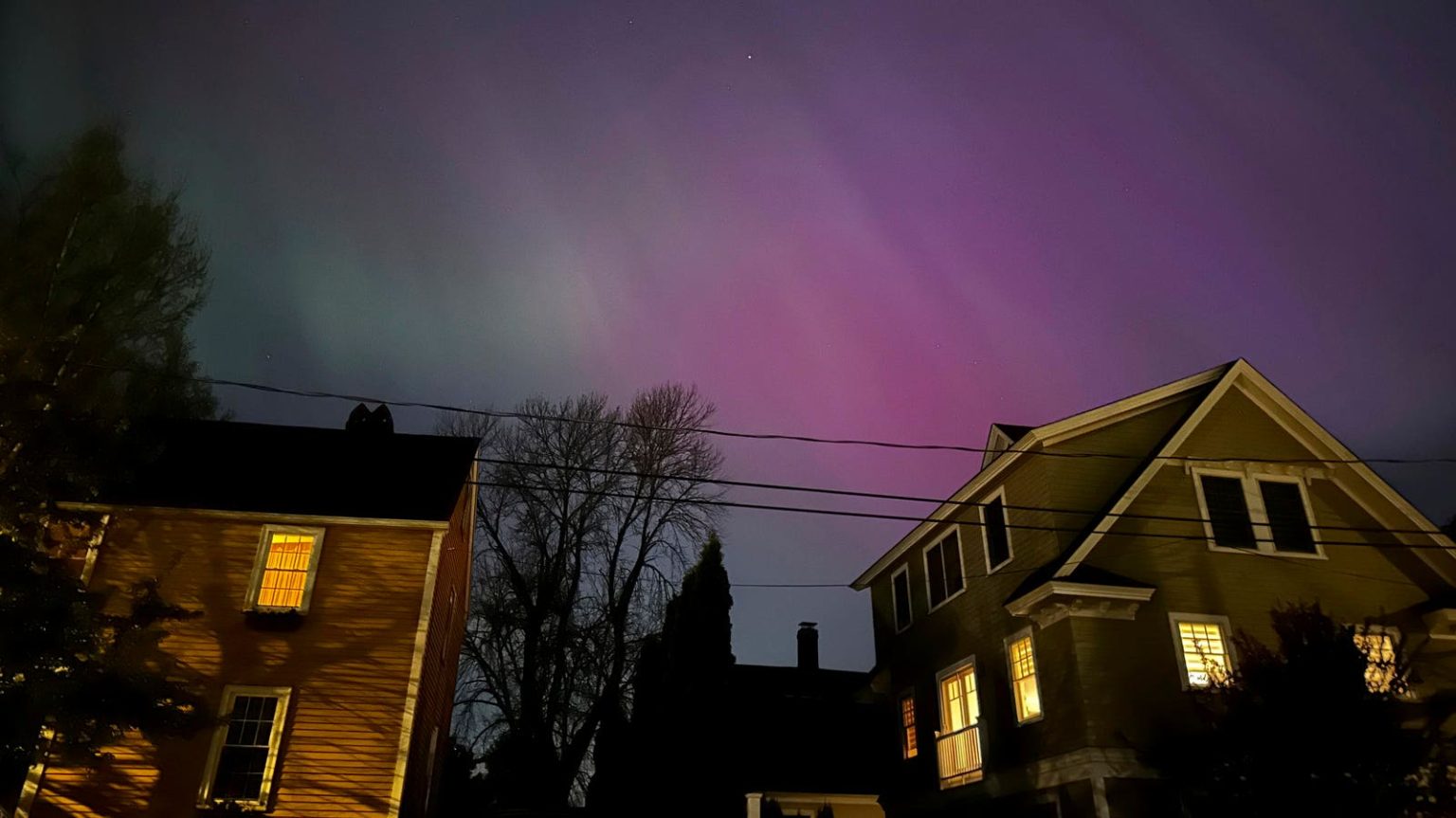Over the weekend, a solar storm caused an impressive display of the northern lights across the United States, from California to Florida. The National Oceanic and Atmospheric Administration (NOAA) has predicted that the aurora may be visible again tonight in parts of the country. The solar storm responsible for the northern lights is currently active and expected to continue through at least Sunday, with parts of the U.S. possibly being able to see the lights tonight, depending on weather conditions.
However, predicting the aurora can be challenging, with visibility depending on brightness and weather conditions. Heavy cloud cover is expected in the Northeast, around New York and New England, as well as in Texas, parts of Oklahoma, and Kentucky. The ongoing solar flares could also pose a risk of disruptions to radio communications, power grids, and navigation signals. Reports have already indicated irregularities in power grids and degraded high-frequency communications and GPS from the effects of the solar storm.
Saturday night’s experimental aurora forecast from the Space Weather Prediction Center shows that states like Oregon, California, Nevada, Utah, Colorado, Kansas, Missouri, Illinois, Kentucky, and others have a greater chance of seeing the lights, with a view line passing through these areas. It’s possible that the lights could even reach as far south as Alabama and were seen in Florida on Friday. NOAA recommends optimal viewing time for the aurora is generally within an hour or two of midnight, between 10 p.m. and 2 a.m. local time. Finding a spot away from city lights with a clear vantage point to the north can increase viewing chances.
The northern lights are a result of geomagnetic storms caused by eruptions on the solar surface, particularly in sunspot regions with strong magnetic activity. While the northern lights are always occurring, they are not always visible and are typically seen around the North Pole. Friday’s solar storm was classified as a G5 storm, the highest level possible and the strongest observed since 2003, with similar conditions observed on Saturday as well. The solar flares that cause the aurora have been linked to a sunspot region called “Sunspot Region 3664,” believed to be 15 times the size of Earth, with NOAA predicting continued strong solar flares until this region rotates out of view in the coming days.













